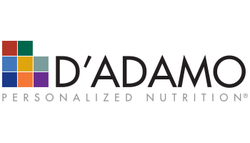Volume 12, Number 05
- Fats, Fiber and Flora by Dr. Peter J. D'Adamo
- Tend Your Garden and Your Gut by Martha D'Adamo
- Blood Type Diet - In The News
- Recipe: Raw Kale Salad with Zesty Lime Dressing
- May Product Specials: 20% OFF Intrinsa & Polyflora
Fats, Fiber and FloraBy Dr. Peter J. D'Adamo |
||||||
|
Editors note: This is the first installment of a 2-part series by Dr. D'Adamo exploring the connection between blood types and the microbiome. Part 2 of the article will run in our June 2015 issue. |
||||||
|
|
The Link Between Fats, Fiber, and Flora Think that probiotics are the be-all and end-all to a healthy gut? Think again. It turns out that restoring balance and harmony to the gut is about treating the ecosystem as a whole. Just like throwing lots of grass seed is no guarantee of a luxurious lawn (if first you've not prepared the soil) taking expensive probiotics will not in themselves help the gut unless you've adjusted the ecosystem to allow them a chance to work. Besides probiotics, three other variables are involved: Your diet, your fiber intake, and the availability of short chain fatty acids in your gut. When these factors are all in balance, your 'symbiotic cycle' is ready to benefit from probiotics. Get Shorty Although most health consumers are aware of the benefits of 'essential' fatty acids (such as linoleic acid and alpha-linolenic acid) and the 'conditionally essential' fatty acids (such as the omega-3s) few are aware of the tremendous importance of the short chain fatty acids (SCFAs). Unlike the EFAs which are long chains of over twenty hydrocarbons, SCFAs are much smaller, often only having three or four hydrocarbons. Because of their small size SCFAs are easily made by bacteria as part of their own life cycle (as fermentation byproducts). The two principal SCFAs with biological activity are propionic acid and butyric acid. Propionic acid (PA) is commonly found on the skin, where it can be produced by bacteria. PA inhibits the growth of mold and some bacteria and is a common preservative for both animal feed and food for human consumption. However, our interest is mainly with the other SCFA, butyric acid, and its salt, which is known as butyrate. Butyrate: Energy for Healing We mammals have a long history with butyrate. It has been in our gut for so long that the lining of our colon has evolved to use it as its primary source of energy. Without butyrate for energy, our colon cells undergo a self-destruction cycle and eventually die. With butyrate, the colon cells can grow and develop normally, better control the permeability of the gut, and regulate inflammation. Butyrate also effects gene regulation and may play an important role in sugar regulation. Although the common conception about the health benefits of fiber are based more or less on the idea of fiber having a 'scrubbing' effect on the gut, its main health benefit is increasingly being viewed as its ability to act as a source for the production of butyrate. It is part of a 'symbiotic cycle' that serves to keep the gut healthy: bacteria produce butyrate, which nourishes the colon cells, which produce other factors (including elements of our blood type) that encourage the balance of beneficial flora. Knock out one part of the cycle and the whole thing stops working.
How to Get It There are two basic ways that we can increase butyrate levels in the gut:
Using a Butyrate Supplement If you plan to use a butyrate supplement, it may be helpful to know that I have developed one for use in my clinical practice that is also available for retail purchase. It is called Intrinsa and includes the synergistic factors caprylic acid and larch arabinogalactan. Caprylic acid is a naturally occurring fatty acid that helps yeast overgrowth, while the larch arabinogalactan serves as a source of soluble fiber. Intrinsa works especially well when combined with the blood type specific diets and a blood type specific probiotic. Putting It All Together A healthy gut requires more than just a probiotic. Just like any ecosystem, one cannot simply change one element and expect it to produce an effect on the entire system. Rather, just like a garden, the gut must be tended. Following the dietary recommendations for you blood type (and secretor status) is a great starting point. Adding a blood type specific probiotic (with blood type specific prebiotics) takes the level of care deeper. Finally, insuring that there is adequate opportunity for the production of butyrate completes the cycle. In disrupted situations (known as dysbiosis) adding a butyrate supplement may be necessary to 'prime the pump,' allowing the de-energized gut lining an opportunity to rebuild and regenerate. In situations like this, a butyrate supplement can help to get the 'motor to turn over' and give the system a chance to rebalance itself naturally. |
|||||
Tend Your Garden and Your GutBy Martha D'Adamo |
|
 |
People of different blood types have different gut bacteria. In fact, certain bacteria are 50,000 times more likely to turn up in people with one blood type than another. This originated from our ancestors whose digestive tracts developed to accommodate one type of diet over another, and whose immune systems developed an ability to reject or co-exist with certain bacteria, but not others. Our blood type can actually 'seed' our gut by encouraging the growth of only those bacteria strains that can use our blood type antigens as a source of food, while our anti-blood type antibodies will attack bacteria that carry antigens resembling those of an opposing blood type. Many avoid food contain lectins that can encourage the growth of problematic strains of bacteria, leading to 'leaky gut' and dysbiosis. This is why the first line of support for healing your digestive tract and building a healthy microbiome is eating the right foods for your blood type. Following these food guidelines is your first line of defense. Additionally, here are some general tips to further support a healthy microbiome:
May is a great time to get into the garden, to eat right, to tend to your gut, and to smile as if you really mean it – in doing so, you will. Happy May! Martha |
Blood Type Diet - In The News |
||
 |
Walk Right For Your Blood Type ON NEWSSTANDS NOW! The April 18th issue of First for Women featured a great article about the benefits of walking right for your type, as a way to lose weight and keep it off. Dr. Peter D'Adamo was interviewed for the article, Daisy Velas Boyce, is profiled. Daisy lost 59 pounds following the Blood Type Diet, and she is quite an inspiration to all of us! |
|
 |
Model Shanina Shaik - On the Blood Type Diet The Daily Mail featured a sneak peak at the April issue of Harper's Bazaar/AU, which featured an article on Super-model Shanina Shaik. She credits following the Blood Type Diet as part of her heath regimen. Shaik joins a growing list of super-models who follow the diet as a way to maintain their health and runway shapes. |
|
Raw Kale Salad with Zesty Lime DressingA Right For All Types Recipe |
||
 |
||
|
Ingredients
Directions
( Serves 4) |
||
|
Find more delicious, simple to prepare recipes in the Eat Right for Your Type Personalized Cookbooks |








